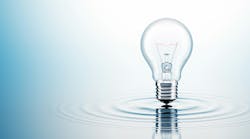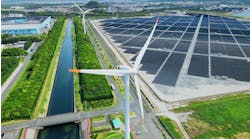For years, smart building technologies that lower utility efficiency and sustainability have primarily focused on lighting, heating/cooling and ventilation. After all, these are the areas where the per-square-foot cost is the highest. However, as innovative building technologies have often already been integrated to create efficiencies in these areas, many are beginning to look to other utilities to continue their drive to reduce utility costs and continue their sustainability commitment.
Today, water resource management is one of the main priorities in smart buildings. As a recent study by the World Resources Institute highlighted, water consumption for domestic use has grown by 600% in the last 50 years, much more than the amount used for industry or irrigation.
As such, modern technologies to manage water consumption effectively and efficiently are gaining increased attention. Let’s look at some of the technologies that are leading the charge toward intelligent water management.
Types of Smart Building Water Management Technologies
A recent article from Idrica, a leading international water technology company, lists a number of ways that intelligent water management can be implemented across several verticals. Those technologies specific to smart building efficiencies include:
- Water management and monitoring. These systems accurately collect and monitor water consumption throughout a building or campus. The collected data is analyzed to find areas of inefficiencies and often includes intelligence that makes recommendations on where and how water can be better conserved.
- Smart taps and sensors. Used in conjunction with water management systems, water sensors are deployed within buildings to measure water precisely to identify areas where water is being consumed or where potential leaks are occurring. Smart taps are also measurement tools used to collect data. However, these taps also help optimize consumption based on occupants' location within a building or campus.
- Humidity and climate sensors. These sensors calculate the optimal water required for HVAC and ventilation purposes based on internal and external humidity and weather measurements.
- Water treatment and purification. Using intelligent filters that clean and disinfect water for reuse purposes helps reduce the potential environmental damage that can negatively impact sustainability efforts.
- Digital Twins. Perhaps the most recent technology related to water management, digital twins simulate various proposed changes to building or campus water management processes to see what positive or negative benefits those changes would have if implemented on production water management systems. This allows building owners and operators to implement water conservation and sustainability measures more accurately without having to make costly and time-consuming trial-and-error tests.
- Smart irrigation systems. These include humidity and climate sensors to determine when it is necessary to water and how much water to use. This optimizes the irrigation of gardens and green areas. Although this is more commonly associated with agriculture, its use in smart buildings is already a reality because it improves environmental sustainability as well as optimizing water use and, consequently, reduces energy consumption.
Conservation: The New Smart Building Target for Practitioners
For building owners and operators who are already on the smart building path, the “low-hanging fruit” of lighting, heating/cooling and ventilation have likely already been addressed. Thus, their new target for the coming years will conceivably shift to water conservation and sustainability. As such, the types of technologies and tactics highlighted above should serve as a solid foundation for what is possible today. If properly implemented and managed, these systems can not only save tremendous amounts of money on water utility spending but also aid in protecting our environment for generations to come.



